Top 10 Types of Packaging Materials for VFFS Machine
Packaging Knowledge Hub

If you're seeking packaging automation solutions, please contact us, and we'll be delighted to offer you the most tailored solution.
VFFS packaging machines rely on specialized packaging materials to enable seamless vertical forming, filling, and sealing in continuous operations. These materials are pivotal in the global food industry, influencing food safety, shelf life, production efficiency, and overall costs.
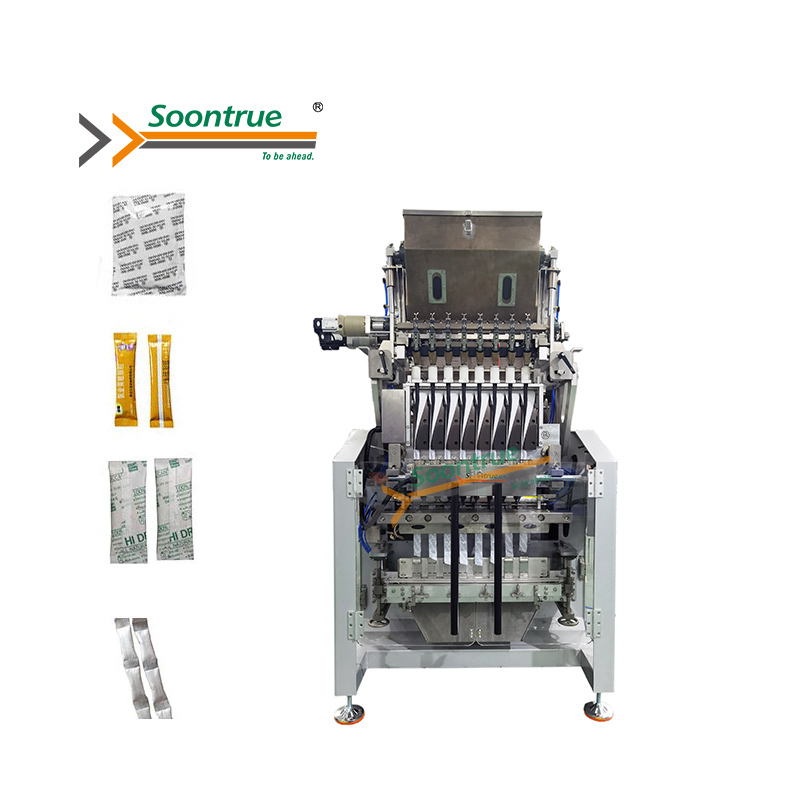
How to Choose the the right packaging materials for VFFS Machines
Food Preservation: Barrier properties that shield against moisture, oxygen, and contamination to extend product freshness.
Production Efficiency: Compatibility with machines for reliable, high-speed performance.
Economic Performance: Balancing material costs, minimizing waste, and boosting profitability.
Regulatory Compliance: Adherence to stringent food safety standards and environmental guidelines.
In this guide, we'll explore the top 10 types of VFFS packaging materials to help you make informed choices for your operations.
Top 10 VFFS Packaging Materials: Properties and Applications
1. Polypropylene (PP) - Most Cost-Effective Option
Key Properties:
- Heat sealing temperature: 120-160°C
- Moderate barrier protection
- Excellent forming characteristics
- Cost index: 1.0 (baseline)
Best Applications: Dry snacks, cereals, pasta, granular products
Why Choose PP: Lowest cost per package with reliable sealing performance up to 120 bags/minute
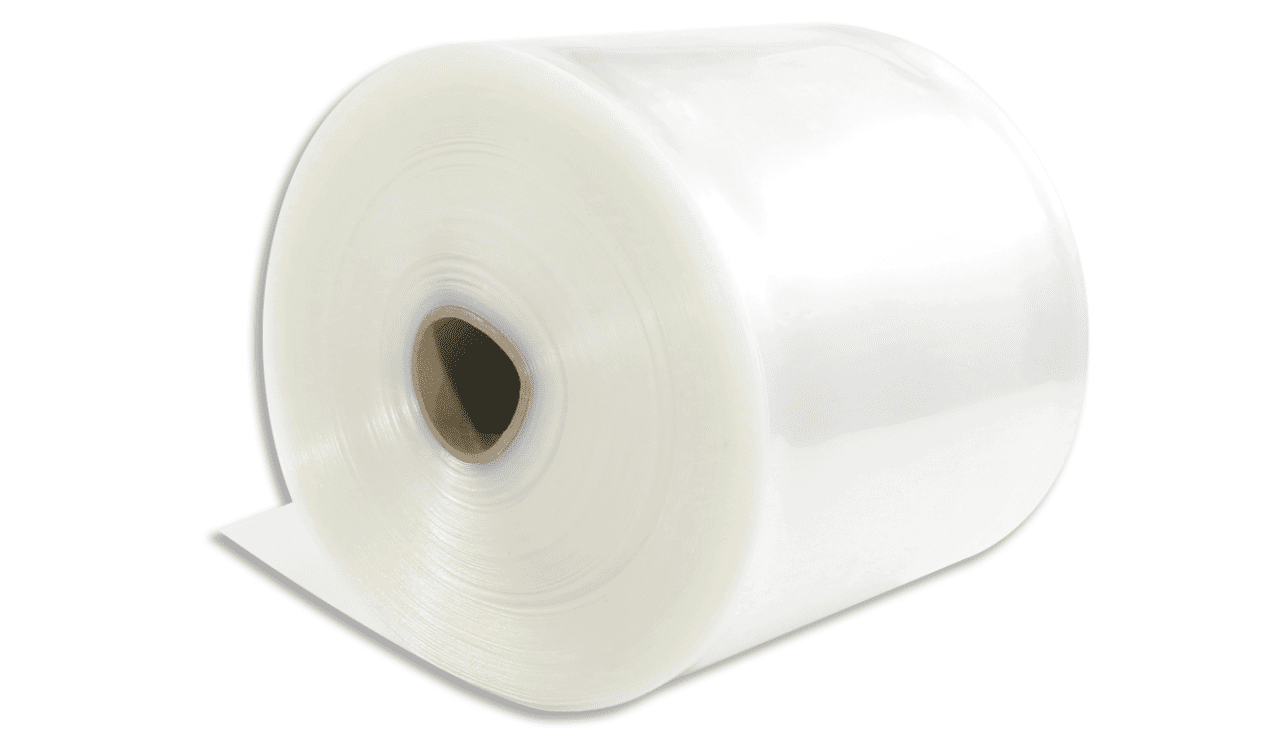
2. Cast Polypropylene (CPP) - Premium Sealing Performance
Key Properties:
- Lower sealing temperature: 110-140°C
- Superior clarity and printability
- Enhanced seal strength: 40-60 N/15mm
- Anti-static options available
Best Applications: Premium confectionery, frozen foods, visual appeal products
Why Choose CPP: Reduced energy consumption with exceptional package appearance

3. Polyvinyl Chloride (PVC) - High Barrier Protection
Key Properties:
- Sealing temperature: 160-180°C
- Excellent oxygen barrier: 50-150 cc/m²/day
- Superior chemical resistance
- Precise temperature control required
Best Applications: Fresh meat, dairy products, high-fat foods
Why Choose PVC: Maximum barrier protection for sensitive products

4. Ethylene Vinyl Acetate (EVA) - Flexible High-Performance
Key Properties:
- Low sealing temperature: 80-120°C
- Exceptional flexibility down to -40°C
- Superior puncture resistance
- Excellent hot tack properties
Best Applications: Frozen foods, liquid pouches, oil-containing snacks
Why Choose EVA: Immediate seal strength with low-temperature flexibility

5. Polyethylene Terephthalate (PET) - Maximum Strength
Key Properties:
- High sealing temperature: 180-220°C
- Exceptional tensile strength: 200-280 MPa
- Superior chemical resistance
- Excellent clarity
Best Applications: Retort meals, acidic products, long shelf-life foods
Why Choose PET: Unmatched mechanical strength for demanding applications
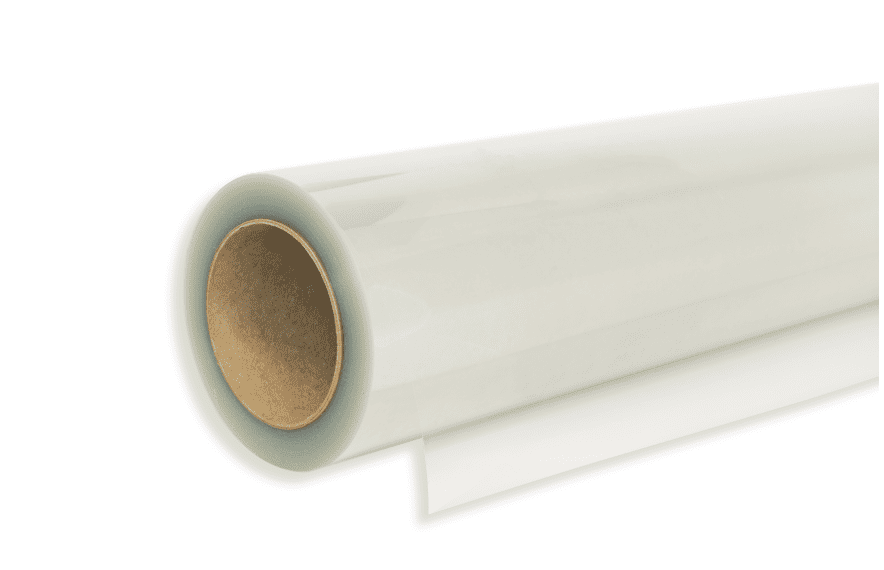
6. Polyethylene (PE) - Most Economical Choice
Key Properties:
- Sealing temperature: 120-170°C
- Excellent moisture barrier
- Lowest material cost
- Wide processing window
Best Applications: Bread, bakery products, frozen vegetables, dairy
Why Choose PE: Best cost-to-performance ratio for moisture protection
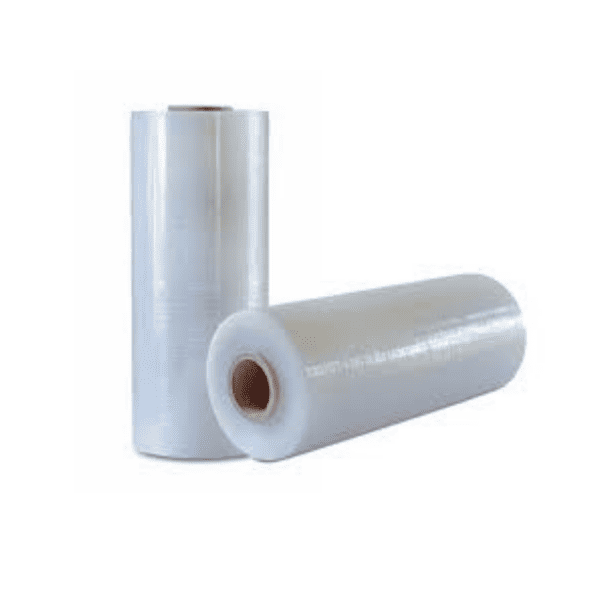
7. PVDC/PVC Barrier Films - Maximum Shelf Life Extension
Key Properties:
- Exceptional oxygen barrier: <5 cc/m²/day
- Superior moisture protection: <0.5 g/m²/day
- 200-400% shelf life improvement
- Premium cost: 40-80% higher
Best Applications: Processed meats, cheese, coffee, pharmaceutical foods
Why Choose PVDC: Maximum barrier protection justifying premium investment
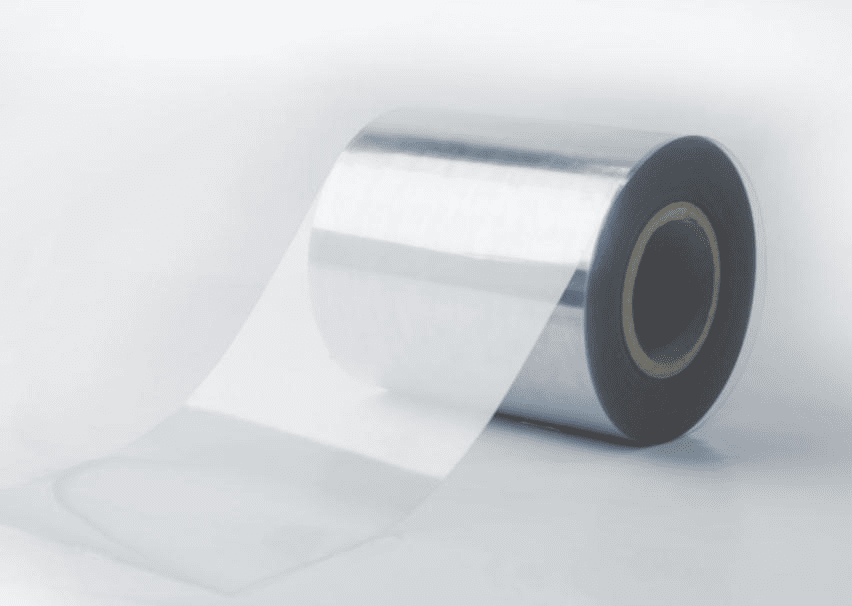
8. OPP/CPP Laminated Films - Optimal Balance
Key Properties:
- Combined stiffness and sealing performance
- Enhanced barrier and print quality
- Excellent forming characteristics
- Superior visual appeal
Best Applications: Premium snacks, confectionery, specialty foods
Why Choose OPP/CPP: Perfect balance of performance and aesthetics

9. Paper Laminated Films - Sustainable Solution
Key Properties:
- Food-grade paper base with barrier coatings
- Recyclable and compostable options
- Variable barrier properties
- Environmental compliance
Best Applications: Organic foods, eco-conscious brands, sustainable packaging
Why Choose Paper Films: Environmental responsibility without performance compromise
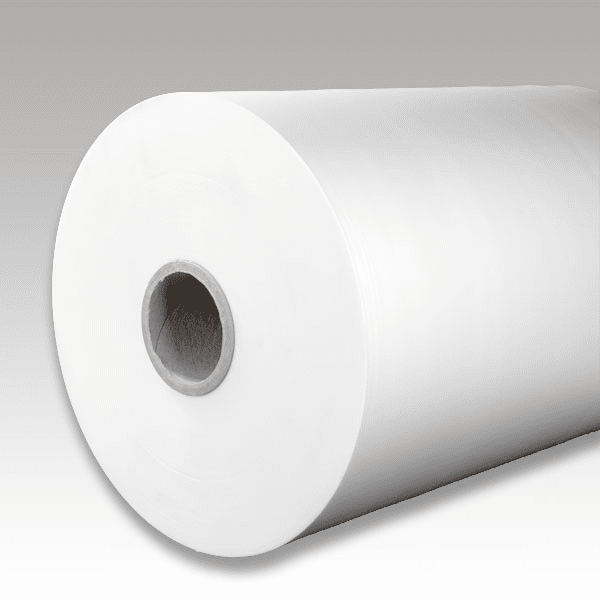
10. Polystyrene (PS) - Specialty Applications
Key Properties:
- Low sealing temperature: 90-110°C
- Excellent clarity
- Limited flexibility
- Thermoforming compatibility
Best Applications: Yogurt lids, portion containers, rigid-flexible combinations
Why Choose PS: Specialized applications requiring rigid components

How to Choose the Right VFFS Material: Step-by-Step Decision Framework
Step 1: Identify Product Requirements
Barrier needs: Moisture, oxygen, light sensitivity levels
Temperature requirements: Storage and processing conditions
Chemical compatibility: pH levels, fat content, alcohol presence
Shelf life targets: Days, weeks, months, or years
Step 2: Evaluate Machine Compatibility
Sealing temperature capabilities: Machine heating system specifications
Speed requirements: Bags per minute production targets
Film handling characteristics: Tracking, tension, forming properties
Quality control systems: Seal strength monitoring, leak detection
Step 3: Calculate Total Cost of Ownership
Material cost per package: Including waste factors and yield rates
Production efficiency: Speed optimization and downtime reduction
Quality costs: Defect rates and customer returns
Shelf life value: Extended storage and distribution benefits
Step 4: Verify Regulatory Compliance
FDA requirements: Food contact substance approvals
International standards: EU regulations, global market access
Migration testing: Product-specific simulant requirements
Environmental regulations: Sustainability and recycling mandates
VFFS Material Performance Comparison Matrix
|
Material |
Sealing Temp (°C) |
Barrier Level |
Cost Factor |
Speed Rating |
Primary Benefits |
|
PP |
120-160 |
Moderate |
1.0x |
High |
Lowest cost, reliable |
|
CPP |
110-140 |
Good |
1.2x |
High |
Premium appearance |
|
PVC |
160-180 |
Excellent |
1.4x |
Medium |
Superior barrier |
|
EVA |
80-120 |
Good |
1.5x |
High |
Flexibility, low temp |
|
PET |
180-220 |
Excellent |
1.8x |
Medium |
Maximum strength |
|
PE |
120-170 |
Good |
0.8x |
High |
Best value |
|
PVDC/PVC |
160-180 |
Superior |
2.2x |
Medium |
Maximum shelf life |
|
OPP/CPP |
110-140 |
Enhanced |
1.6x |
High |
Balanced performance |
|
Paper |
120-160 |
Variable |
1.3x |
Medium |
Sustainability |
|
PS |
90-110 |
Limited |
1.1x |
Low |
Specialty applications |
Common VFFS Material Problems and Solutions
Problem: Inconsistent Seal Strength
Causes: Temperature variation, contamination, incorrect pressure Solutions: Zone-controlled heating, regular maintenance, parameter optimization Prevention: Continuous monitoring, operator training, quality protocols
Problem: Film Tracking Issues
Causes: Uneven tension, roll defects, static electricity Solutions: Servo-controlled edge guides, tension optimization, ionization systems Prevention: Material quality specifications, environmental control
Problem: Package Defects
Causes: Wrong material selection, parameter mismatch, machine wear Solutions: Material reselection, parameter adjustment, preventive maintenance Prevention: Comprehensive testing, regular calibration, operator expertise
2026 VFFS Material Trends and Future Outlook
Sustainable Materials Growth
- Bio-based films: 25-30% annual growth projected
- Recyclable structures: Mono-material designs increasing
- Compostable options: Expanding for organic food markets
- Reduced thickness: Downgauging while maintaining performance
Smart Packaging Integration
- Sensor-compatible films: Temperature, freshness indicators
- QR code integration: Enhanced print compatibility
- Active packaging: Oxygen scavengers, antimicrobial properties
- Track-and-trace: Supply chain visibility requirements
Regulatory Evolution
- Stricter migration limits: Enhanced food safety requirements
- Extended producer responsibility: End-of-life management
- Global harmonization: Standardized international requirements
- Transparency mandates: Supply chain documentation
Cost Optimization Strategies for VFFS Materials
Volume-Based Purchasing
- Quarterly commitments: 5-15% cost reductions
- Multi-material contracts: Negotiating leverage
- Inventory optimization: Balancing costs and storage
- Supplier partnerships: Long-term relationship benefits
Waste Reduction Implementation
Process optimization: Setup time reduction, parameter stability
Quality improvements: Defect rate minimization
Material recovery: Recycling production waste
Inventory management: First-in-first-out rotation
Performance Optimization
- Speed improvements: 5-15% throughput increases possible
- Energy efficiency: Lower sealing temperatures
- Labor reduction: Automated handling systems
- Quality consistency: Reduced manual interventions
Key Takeaways for VFFS Material Selection Success
Material Selection Priority: Match barrier requirements to product needs first, then optimize for machine compatibility and cost efficiency.
Performance Focus: Prioritize seal consistency and production speed over lowest material cost for long-term profitability.
Regulatory Compliance: Maintain comprehensive documentation and certification for all materials to ensure food safety compliance.
Sustainability Integration: Plan for increasing demand for environmentally responsible packaging solutions without compromising performance.
Technical Support Investment: Develop internal expertise and testing capabilities to provide value-added services differentiating from commodity suppliers.
Future Preparation: Stay informed about emerging materials, smart packaging integration, and evolving regulatory requirements to maintain competitive advantages.
This comprehensive guide provides the essential knowledge for successful VFFS packaging material selection, supporting both technical decision-making and business growth in the evolving food packaging industry..
After reviewing your options, which material is right for you? Contact our packaging specialists for a free consultation to match the perfect material to your product and machine.
FAQ
Q1: For a new product, what's the first step in choosing packaging material for VFFS Machine ?
A: Start by defining your product's core needs, such as its required moisture/oxygen barrier and target shelf life. This will significantly narrow down your material options before you even consider cost or machine compatibility.
Q2: My seals are inconsistent. Is it the film's fault or my VFFS machine's?
A: It's often a combination. First, verify your machine's sealing temperature and pressure are correct for the film's specifications. If the problem persists, the issue could be inconsistent film quality or thickness.
Q3: Are sustainable or paper-based films strong enough for high-speed VFFS machines?
A: Yes, modern sustainable laminates are engineered for strength and performance on high-speed lines. However, they may require minor adjustments to your machine's temperature and tension settings for optimal results.
Q4: What's the quickest way to lower my film costs without risking product safety?
A: Consider "downgauging" to a thinner film that offers equivalent barrier properties. Alternatively, evaluate if a simpler material like PE or PP can meet your needs instead of a more expensive laminate, but always test thoroughly before switching.
Q5: What does it mean when a film is a laminate, like PET/PE?
A: A laminate combines layers to get the benefits of each, like PET for strength and printability on the outside and PE for a reliable seal on the inside. This structure provides superior performance that a single material cannot offer alone.

